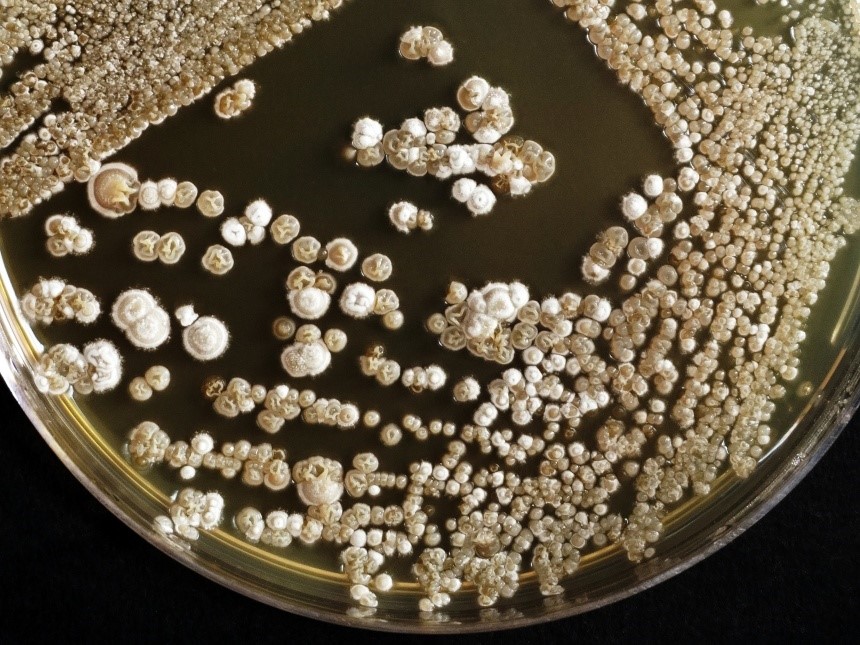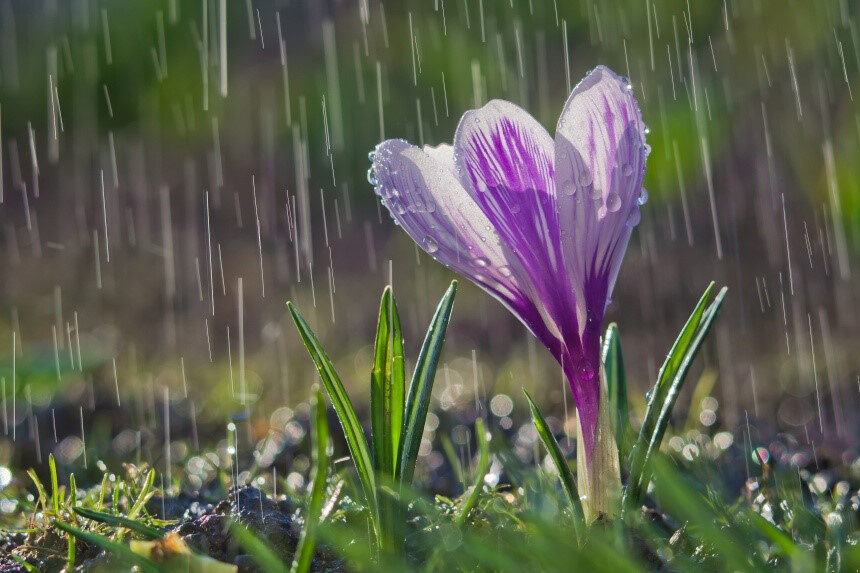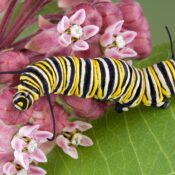In addition to its longer days, I look forward to spring’s warmer temperatures, distinct lack of snow, and especially its fragrance. To me, spring smells like the promise of renewed life as the soil awakens and green leaves burst forth. “Earthy” is the descriptor often used for this welcome perfume. I find it intoxicating. The explanation of why spring smells nice is less poetic, but it’s fun and quirky at every turn.
Spring’s aroma has long intrigued us, to the point that sixty years ago, Australian scientists gave it a name: “petrichor.” This word is derived from the Greek “smells like a rock.” Well, something like that. Shortly after the wondrous bouquet of spring got a name, British scientists found its primary source, a tertiary alcohol they dubbed “geosmin,” a Greek-based term for “smells like a rock.” In other words, the springtime “smells like a rock” aroma is principally due to the odor of “smells like a rock.” If that was your answer on a test, I’m not sure you’d get full credit for it.
To be fair, petrichor may involve other things like plant oils, but the chief contributor is geosmin. Humans can smell geosmin at very low levels, in the parts-per-trillion range. We’re actually 1,000 times better at detecting geosmin than a shark is at sensing blood at a mere one part per million. One also gets a whiff of petrichor just as a rainstorm breaks, and again right afterward.
It took a while to figure out that geosmin is made by soil bacteria in the genus Streptomyces. If that name rings a bell, it’s because the vital antibiotic streptomycin comes from these bacteria. In fact, Streptomyces bacteria give us more than two-thirds of all naturally-sourced antibiotics. It’s a little creepy to think that Streptomyces’ close relatives cause leprosy and tuberculosis, while other members of the family provide the cure. Talk about job security.

Geosmin is one of several toxins these bacteria make to kill fungi, nematodes, and other soil organisms that like to dine on them. Paradoxically, there’s one predator that they want to come devour them; getting eaten by this creature is the only way Streptomyces can survive.
The “marauder” is tiny, about one-eighth to one-sixteenth of an inch long. Known as springtails, they crave alcohol. Specifically, geosmin, which they can safely digest without suffering ill effects. Found the world over, including the polar regions, springtails are hexapods (the non-robotic kind), related to insects. Sometimes they’re called snow fleas, as they like to bop around on the snow on mild winter days. Outside of winter, they burrow through soil in search of rotting stuff to eat.

Springtails, which are thousands of times bigger than a bacterium, still find plenty to eat. How do these critters, which presumably don’t use microscopes, find prey that’s too small to see? The answer is that Streptomyces form colonies of up to several inches across, resembling patches of mold. Easy pickings for the only living thing able to eat them and not die.
The reason Streptomyces are in such a hurry to use geosmin to lure springtails to gobble up their colonies is that springtails are the perfect vectors for bacterial spores. Essential to the formation of healthy topsoil, springtails can number around 100,000 individuals per cubic yard, and they range throughout the soil profile, from the surface to quite deep down. Their high numbers and roving natures help move Streptomyces away from older colonies, which die out as available food is depleted, to far-flung locales. Some of these new neighborhoods are just right to begin fresh bacterial outposts.
Though the first bacteria appeared on Earth 3.5 billion years (give or take a couple, I imagine) ago, Streptomyces showed up about 450 million years ago. Evidently, springtails date back to the same period, so these two organisms have had copious time to perfect their symbiotic ballet. Both of them are only active in the presence of moisture, which accounts for why we notice petrichor in spring when the ground is usually moist, and around rain events.
Streptomyces have been quite generous to us in terms of the array of antibiotics derived from them, but springtails have gifted us with cool stuff, too. They make a unique protein-based antifreeze (that’s why they’re so active in winter) that may soon allow us to freeze human organs destined for transplants without damage to the organs. The same antifreeze compound is said to keep ice from forming on top of the ice cream in our freezer. Springtails are entertaining as well – they can bounce seven inches into the air, which is like one of us jumping roughly 500 feet straight up. Which would be fun, except for the return trip.
What it boils down to is that the pleasing aroma of springtime (and rainstorms) is thanks to a group of bacteria that look like fungi, urgently want to be someone’s dinner, and make deadly poisons that we use as life-saving drugs. In turn, these bacteria rely on a coterie of insect-like critters who can’t say no to alcohol, excel in outdoor winter high-jumping, and enjoy subterranean rambles. Pretty simple.
Become a Saturday Evening Post member and enjoy unlimited access. Subscribe now




Comments
This is really fascinating, and important to know as well.